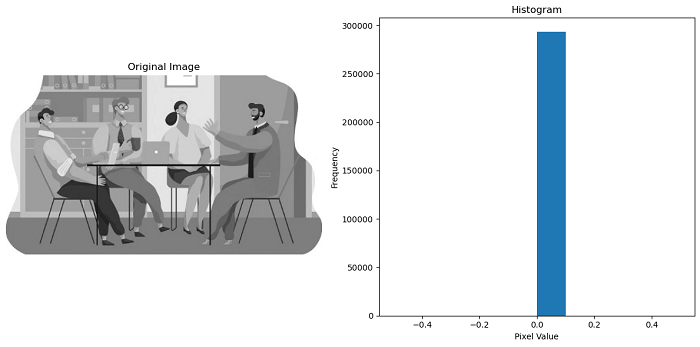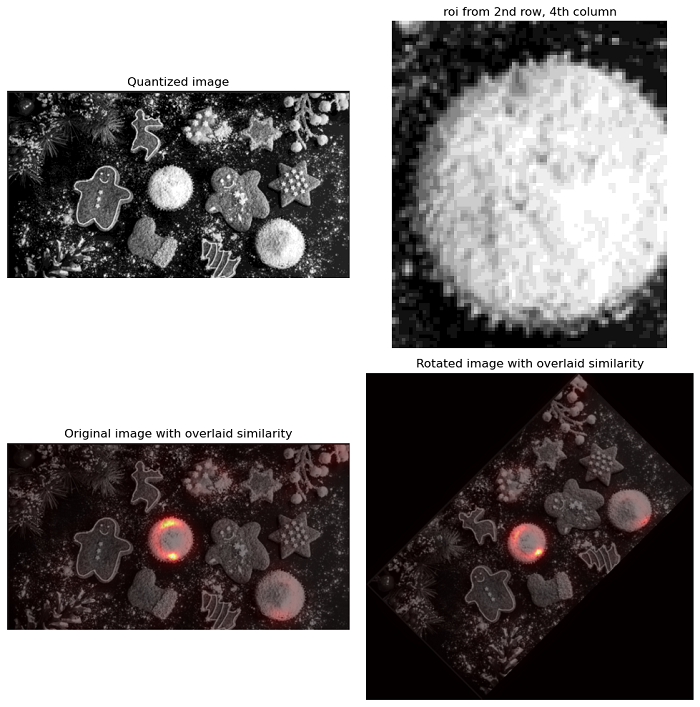
- Scikit Image – Introduction
- Scikit Image - Image Processing
- Scikit Image - Numpy Images
- Scikit Image - Image datatypes
- Scikit Image - Using Plugins
- Scikit Image - Image Handlings
- Scikit Image - Reading Images
- Scikit Image - Writing Images
- Scikit Image - Displaying Images
- Scikit Image - Image Collections
- Scikit Image - Image Stack
- Scikit Image - Multi Image
- Scikit Image - Data Visualization
- Scikit Image - Using Matplotlib
- Scikit Image - Using Ploty
- Scikit Image - Using Mayavi
- Scikit Image - Using Napari
- Scikit Image - Color Manipulation
- Scikit Image - Alpha Channel
- Scikit Image - Conversion b/w Color & Gray Values
- Scikit Image - Conversion b/w RGB & HSV
- Scikit Image - Conversion to CIE-LAB Color Space
- Scikit Image - Conversion from CIE-LAB Color Space
- Scikit Image - Conversion to luv Color Space
- Scikit Image - Conversion from luv Color Space
- Scikit Image - Image Inversion
- Scikit Image - Painting Images with Labels
- Scikit Image - Contrast & Exposure
- Scikit Image - Contrast
- Scikit Image - Contrast enhancement
- Scikit Image - Exposure
- Scikit Image - Histogram Matching
- Scikit Image - Histogram Equalization
- Scikit Image - Local Histogram Equalization
- Scikit Image - Tinting gray-scale images
- Scikit Image - Image Transformation
- Scikit Image - Scaling an image
- Scikit Image - Rotating an Image
- Scikit Image - Warping an Image
- Scikit Image - Affine Transform
- Scikit Image - Piecewise Affine Transform
- Scikit Image - ProjectiveTransform
- Scikit Image - EuclideanTransform
- Scikit Image - Radon Transform
- Scikit Image - Line Hough Transform
- Scikit Image - Probabilistic Hough Transform
- Scikit Image - Circular Hough Transforms
- Scikit Image - Elliptical Hough Transforms
- Scikit Image - Polynomial Transform
- Scikit Image - Image Pyramids
- Scikit Image - Pyramid Gaussian Transform
- Scikit Image - Pyramid Laplacian Transform
- Scikit Image - Swirl Transform
- Scikit Image - Morphological Operations
- Scikit Image - Erosion
- Scikit Image - Dilation
- Scikit Image - Black & White Tophat Morphologies
- Scikit Image - Convex Hull
- Scikit Image - Generating footprints
- Scikit Image - Isotopic Dilation & Erosion
- Scikit Image - Isotopic Closing & Opening of an Image
- Scikit Image - Skelitonizing an Image
- Scikit Image - Morphological Thinning
- Scikit Image - Masking an image
- Scikit Image - Area Closing & Opening of an Image
- Scikit Image - Diameter Closing & Opening of an Image
- Scikit Image - Morphological reconstruction of an Image
- Scikit Image - Finding local Maxima
- Scikit Image - Finding local Minima
- Scikit Image - Removing Small Holes from an Image
- Scikit Image - Removing Small Objects from an Image
- Scikit Image - Filters
- Scikit Image - Image Filters
- Scikit Image - Median Filter
- Scikit Image - Mean Filters
- Scikit Image - Morphological gray-level Filters
- Scikit Image - Gabor Filter
- Scikit Image - Gaussian Filter
- Scikit Image - Butterworth Filter
- Scikit Image - Frangi Filter
- Scikit Image - Hessian Filter
- Scikit Image - Meijering Neuriteness Filter
- Scikit Image - Sato Filter
- Scikit Image - Sobel Filter
- Scikit Image - Farid Filter
- Scikit Image - Scharr Filter
- Scikit Image - Unsharp Mask Filter
- Scikit Image - Roberts Cross Operator
- Scikit Image - Lapalace Operator
- Scikit Image - Window Functions With Images
- Scikit Image - Thresholding
- Scikit Image - Applying Threshold
- Scikit Image - Otsu Thresholding
- Scikit Image - Local thresholding
- Scikit Image - Hysteresis Thresholding
- Scikit Image - Li thresholding
- Scikit Image - Multi-Otsu Thresholding
- Scikit Image - Niblack and Sauvola Thresholding
- Scikit Image - Restoring Images
- Scikit Image - Rolling-ball Algorithm
- Scikit Image - Denoising an Image
- Scikit Image - Wavelet Denoising
- Scikit Image - Non-local means denoising for preserving textures
- Scikit Image - Calibrating Denoisers Using J-Invariance
- Scikit Image - Total Variation Denoising
- Scikit Image - Shift-invariant wavelet denoising
- Scikit Image - Image Deconvolution
- Scikit Image - Richardson-Lucy Deconvolution
- Scikit Image - Recover the original from a wrapped phase image
- Scikit Image - Image Inpainting
- Scikit Image - Registering Images
- Scikit Image - Image Registration
- Scikit Image - Masked Normalized Cross-Correlation
- Scikit Image - Registration using optical flow
- Scikit Image - Assemble images with simple image stitching
- Scikit Image - Registration using Polar and Log-Polar
- Scikit Image - Feature Detection
- Scikit Image - Dense DAISY Feature Description
- Scikit Image - Histogram of Oriented Gradients
- Scikit Image - Template Matching
- Scikit Image - CENSURE Feature Detector
- Scikit Image - BRIEF Binary Descriptor
- Scikit Image - SIFT Feature Detector and Descriptor Extractor
- Scikit Image - GLCM Texture Features
- Scikit Image - Shape Index
- Scikit Image - Sliding Window Histogram
- Scikit Image - Finding Contour
- Scikit Image - Texture Classification Using Local Binary Pattern
- Scikit Image - Texture Classification Using Multi-Block Local Binary Pattern
- Scikit Image - Active Contour Model
- Scikit Image - Canny Edge Detection
- Scikit Image - Marching Cubes
- Scikit Image - Foerstner Corner Detection
- Scikit Image - Harris Corner Detection
- Scikit Image - Extracting FAST Corners
- Scikit Image - Shi-Tomasi Corner Detection
- Scikit Image - Haar Like Feature Detection
- Scikit Image - Haar Feature detection of coordinates
- Scikit Image - Hessian matrix
- Scikit Image - ORB feature Detection
- Scikit Image - Additional Concepts
- Scikit Image - Render text onto an image
- Scikit Image - Face detection using a cascade classifier
- Scikit Image - Face classification using Haar-like feature descriptor
- Scikit Image - Visual image comparison
- Scikit Image - Exploring Region Properties With Pandas
Scikit Image - Sliding Window Histogram
The sliding window algorithm is a fundamental technique in computer vision and image processing, widely employed for localized analysis of images. On the other hand, histogram matching involves comparing the histograms of two images to discover similarities and can be used for object detection in images.
A sliding window histogram is a technique used in image processing to analyze the local distribution of pixel values within an image. It involves moving a small "window" or "kernel" across the image and computing a histogram within that window at each position.
This tutorial extracts a small region from an input image and uses histogram matching to attempt to locate a similar region within the original image.
Computing a sliding window histogram is common in solving computer vision problems such as object detection, object tracking, and image filtering. The scikit-image library provides the filters.rank.windowed_histogram() function for this purpose, as it uses an efficient sliding window-based algorithm that is able to compute these histograms quickly.
Using the skimage.filters.rank.windowed_histogram() function
The skimage.filters.rank.windowed_histogram() function is used to compute the normalized sliding window histogram of an input image. It calculates histograms within local neighborhoods defined by a specified footprint and an optional mask.
Syntax
skimage.filters.rank.windowed_histogram(image, footprint, out=None, mask=None, shift_x=False, shift_y=False, n_bins=None)
Parameters
The function accepts the following parameters −
image (2-D array (integer or float)): Input image on which the windowed histogram will be calculated.
Footprint (2-D array (integer or float)): The neighborhood is expressed as a 2-D array of 1's and 0's.
out (2-D array (integer or float), optional): If provided, it is an output array where the results will be stored. If None, a new array will be allocated for the output.
mask (ndarray (integer or float), optional): A mask array that defines the area of the image included in the local neighborhood. The mask is typically used to restrict histogram calculations to specific regions of interest. If None, the complete image is used as the mask by default.
shift_x, shift_y (int, optional): Offsets added to the footprint center point. The shift is bounded to the footprint sizes, ensuring that the center remains inside the footprint.
n_bins (int or None, optional): The number of histogram bins. If provided, it specifies the number of bins for the histogram. If set to None, the number of bins will default to image.max() + 1.
The function returns an output array out, which is a 3-D array of dimensions (H, W, N), where (H, W) are the dimensions of the input image, and N is the number of histogram bins (n_bins) or image.max() + 1 if no n_bins value is provided. Each pixel in the output array is an N-dimensional feature vector that represents the histogram. The sum of the elements in the feature vector is 1, except when no pixels in the window are covered by both the footprint and the mask, in which case all elements will be 0.
Example
Here is a simple example that calculates the windowed histogram of the input image using the skimage.filters.rank.windowed_histogram() function.
import numpy as np
import matplotlib.pyplot as plt
from skimage import io
from skimage.filters.rank import windowed_histogram
from skimage.morphology import disk
# Load the input image
img = io.imread('Images/group chat.jpg', as_gray=True)
# Calculate the windowed histogram of the camera image
hist_img = windowed_histogram(img, disk(5))
# Create subplots to display the original image and the selected windowed histogram slice
fig, axes = plt.subplots(1, 2, figsize=(12, 6))
# Plot the original image
axes[0].imshow(img, cmap='gray')
axes[0].set_title('Original Image')
axes[0].axis('off')
# Flatten the histogram image and calculate the histogram
hist_values = hist_img.ravel()
# Plot the histogram
axes[1].hist(hist_values)
axes[1].set_title('Histogram')
axes[1].set_xlabel('Pixel Value')
axes[1].set_ylabel('Frequency')
plt.tight_layout()
plt.show()
Output

Example
The following example demonstrates the use of the windowed_histogram function to compare a region of interest (ROI) in an image to the within the original image.
import numpy as np
import matplotlib.pyplot as plt
from skimage import io, transform
from skimage.util import img_as_ubyte
from skimage.morphology import disk
from skimage.filters import rank
def windowed_histogram_similarity(image, footprint, reference_hist, n_bins):
# Compute normalized windowed histogram feature vector for each pixel
px_histograms = rank.windowed_histogram(image, footprint, n_bins=n_bins)
# Reshape the reference histogram for broadcasting
reference_hist = reference_hist.reshape((1, 1) + reference_hist.shape)
# Compute Chi squared distance metric: sum((X-Y)^2 / (X+Y))
X = px_histograms
Y = reference_hist
num = (X - Y) ** 2
denom = X + Y
denom[denom == 0] = np.inf # Prevent division by zero
frac = num / denom
chi_sqr = 0.5 * np.sum(frac, axis=2)
# Generate a similarity measure, taking the reciprocal
# to make it higher when distance is low
similarity = 1 / (chi_sqr + 1.0e-4)
return similarity
# Load the input image and convert it to grayscale
img = img_as_ubyte(io.imread('Images/decore.png', as_gray=True))
# Quantize the image to 16 levels of grayscale
quantized_img = img // 16
# Select a region of interest in the image
roi = quantized_img[120:215, 240:320]
# Compute roi histogram and normalize it
roi_hist, _ = np.histogram(roi.flatten(), bins=16, range=(0, 16))
roi_hist = roi_hist.astype(float) / np.sum(roi_hist)
# Create a disk-shaped mask for sliding window
footprint = disk(30)
# Compute similarity across the entire image
similarity = windowed_histogram_similarity(quantized_img, footprint, roi_hist,
roi_hist.shape[0])
# Rotate the image by 45 degrees
rotated_img = img_as_ubyte(transform.rotate(img, 45.0, resize=True))
quantized_rotated_image = rotated_img // 16
# Compute similarity on the rotated image
rotated_similarity = windowed_histogram_similarity(quantized_rotated_image,
footprint, roi_hist,
roi_hist.shape[0])
# Create subplots to display results
fig, axes = plt.subplots(nrows=2, ncols=2, figsize=(10, 10))
axes[0, 0].imshow(quantized_img, cmap='gray')
axes[0, 0].set_title('Quantized image')
axes[0, 0].axis('off')
axes[0, 1].imshow(roi, cmap='gray')
axes[0, 1].set_title('roi from 2nd row, 4th column')
axes[0, 1].axis('off')
axes[1, 0].imshow(img, cmap='gray')
axes[1, 0].imshow(similarity, cmap='hot', alpha=0.5)
axes[1, 0].set_title('Original image with overlaid similarity')
axes[1, 0].axis('off')
axes[1, 1].imshow(rotated_img, cmap='gray')
axes[1, 1].imshow(rotated_similarity, cmap='hot', alpha=0.5)
axes[1, 1].set_title('Rotated image with overlaid similarity')
axes[1, 1].axis('off')
plt.tight_layout()
plt.show()
Output
